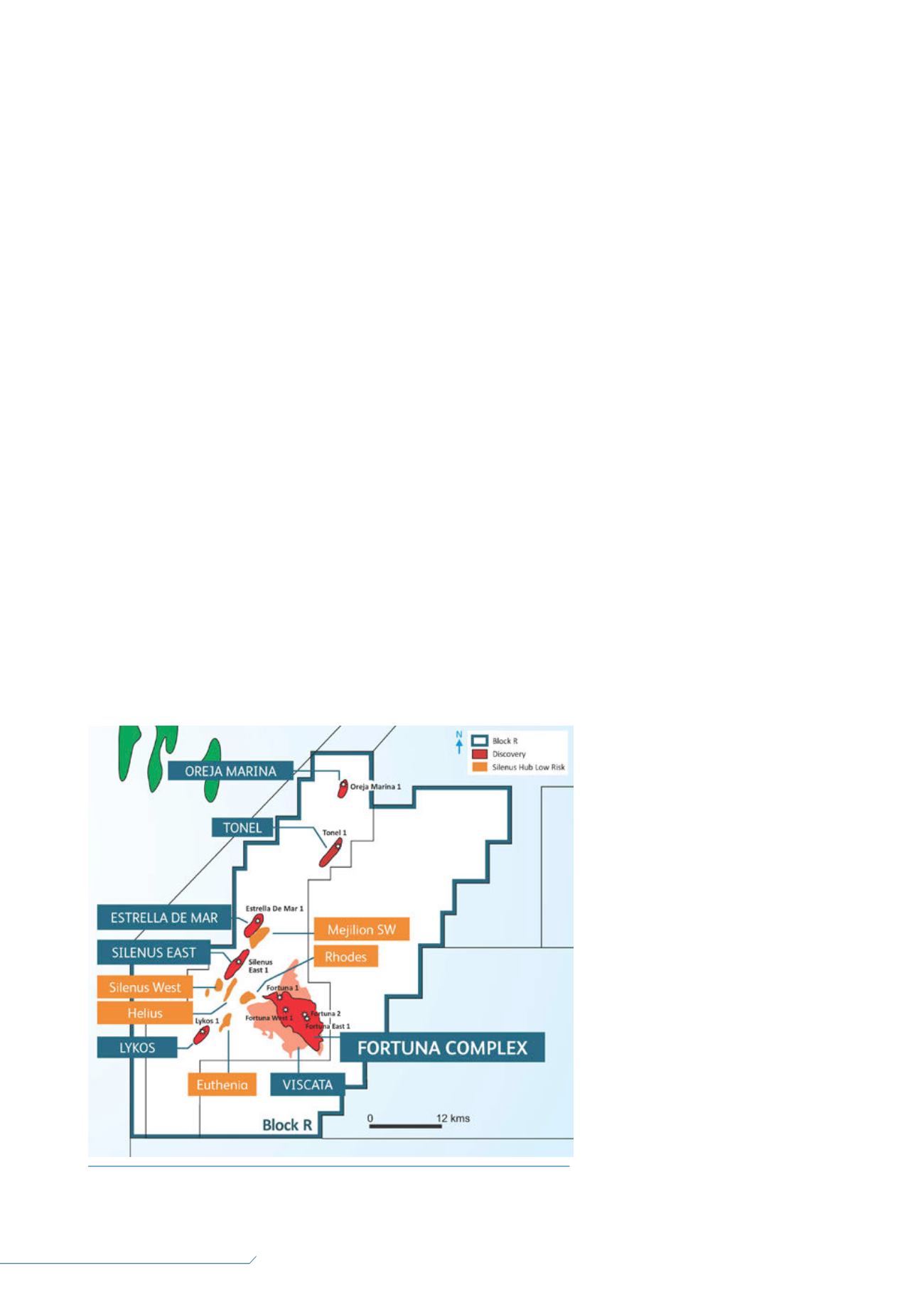
30
LNG
INDUSTRY
MARCH
2016
The project is structured to leverage off the expertise of
industry leading partners and contractors. Ophir will be the
upstream operator.
Why FLNG?
FLNG was one of a number of development options
considered, and was chosen over options including back fill
of Punta Europa LNG Train 1 and terrestrial LNG, because it
offered the simplest, fastest and most economic solution. The
main factors that contributed to this decision included:
The benign metocean conditions where the Block is
located.
The dry, pure-methane gas, requiring relatively simple
onboard liquefaction processing.
Rapid timing to first gas that FLNG can provide.
Attractive, robust economics.
It was further optimised through the partnership with
Golar LNG. Rather than a bespoke new-build vessel, Golar
uses a converted LNG tanker, reducing both CAPEX and
schedule. The FLNG vessel lease structure significantly
reduces CAPEX and financing requirements for the
upstream contractors.
The economics of the project are more critical than ever in
the current macroeconomic climate, which does not favour
capital intensive developments by medium sized independent
companies. In addition, the first production date of 2019
(perceived by some to be a period of over supply) provided
an additional incentive to deliver the most competitive LNG
pricing.
Project overview
Fortuna sits within the Block R licence, offshore
Equatorial Guinea, located in the south-eastern part of the
Niger Delta complex. Ophir currently holds an 80% operated
interest in Block R where seven commercial discoveries have
been made to date, five of which were made by the company.
Three drilling campaigns have been conducted since 2008
and, in 2014, Ophir completed a Drill Stem Test (DST) on
the Fortuna field. This achieved an equipment-constrained
flowrate of 60 million ft
3
/d, indicating that development
well production rates could exceed 220 million ft
3
/d under
operational conditions. The pressure data gained from the
DST demonstrated high levels of connectivity within the
Fortuna reservoir, with minimum connected volumes of
approximately 800 billion ft
3
.
Development
The project comprises a phased development of up to
17 deepwater production wells produced through a subsea
gathering system, operated by Ophir, tied back initially to a
single four-train FLNG vessel. The upstream development
will be designed to produce up to 440 million ft
3
/d to
ensure the FLNG vessel is able to produce a minimum of
2.2 million tpy of LNG. Ophir intends to deploy a second
FLNG vessel in 2025, increasing plateau production capacity
to approximately 4.4 million tpy.
The upstream part of the project is responsible for
delivering gas to the FLNG vessel. WorleyParsons has been
appointed owners’ engineer to provide project delivery
capability to the Ophir team. Upstream FEED contracts have
been awarded to two competing consortia: McDermott
Marine Construction Ltd and GE Oil & Gas
UK Ltd; and Subsea 7 and Aker Solutions.
Upstream FEED is scheduled for
completion in 1Q16.
The midstream part of the project
concerns the FLNG vessel, which will be
owned, operated and maintained by
Golar. Keppel has been engaged by Golar
to undertake the refit of an existing vessel
and is utilising Black & Veatch
liquefaction technology.
Upstream
development
Block R is located in water depths
ranging from 1500 m in the east to over
2500 m in the west. The water depth
in the development area ranges from
1500 m to 1850 m. The target reservoir
depths range from 2225 m in Silenus to
2680 m in Viscata. There are plans to drill
and complete the development wells
with a dynamically positioned mobile
offshore drilling unit prior to installation
of the subsea production infrastructure.
The well designs are simple and will
only require a short drilling duration.
Figure 1.
Fortuna sits within Block R, offshore Equatorial Guinea.


